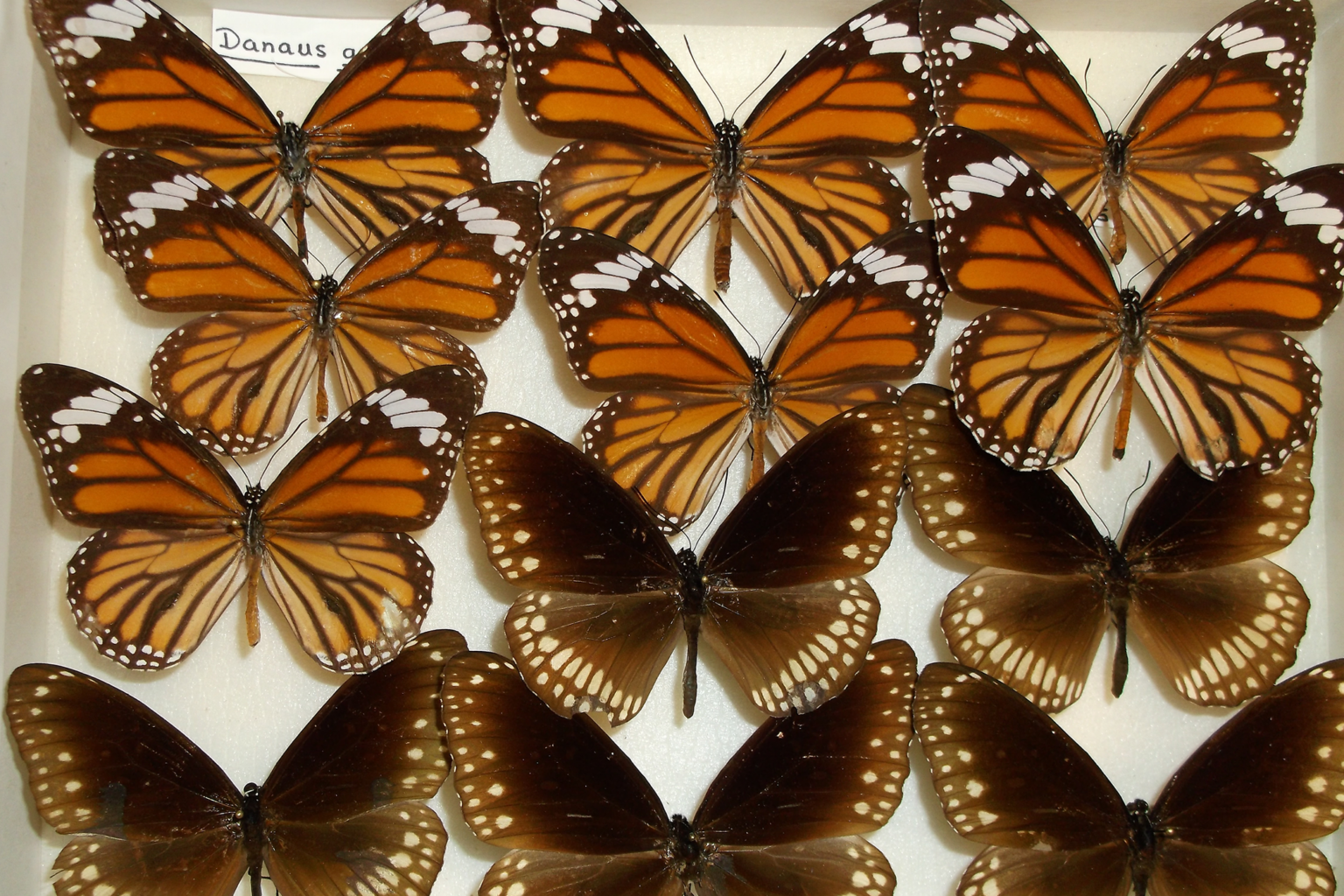News — Butterfly collections are a common sight in museums, their brightly colored wings and unique patterns drawing the eyes of visitors. While these pinned specimens on display are stunning on their own, from the University of Georgia explored how museum specimens can be used to track the spread of disease.
Ophryocystis elektroscirrha (OE) is a protozoan parasite that can hamper a butterfly’s growth and flight. Caterpillars can become infected by eating spores on the surface of plants, and the resulting infection can persist into adulthood.
OE rarely kills its victims directly, as it depends on adult butterflies to spread its spores. Even so, it’s estimated that millions of monarchs don’t survive their annual migration due to infection.
“A lot of people don’t think about butterflies as getting sick, but butterflies and other insects can be host to microbes that cause problems for them,” said , Martha Odum Distinguished Professor in UGA’s and a corresponding author of the study. “It’s like having a debilitating lifelong illness that makes it harder for you to travel and work, but it doesn’t necessarily kill you outright.”
The researchers studied almost 3,000 butterfly specimens from five museums in the U.S. and abroad, including the . Five of the 61 butterfly species they sampled were found to be infected, with cases dating as far back as 1909, 60 years before the first published descriptions of OE in monarchs and queens. This study also contains the first reported infections of Jamaican monarchs.
Distribution of infections widespread
The butterfly specimens came from all over the world and were collected from 1832 to 2019. Because of how fragile the specimens are, the researchers had to use a special technique to avoid damaging them.
When butterflies are infected with OE, spores of the parasite appear on the outside of their bodies. The researchers collected samples by carefully twisting a fiber swab against the body and sampling the butterfly’s scales. The scales can then be transferred to a glass slide and examined under a microscope.
This study focused on milkweed butterflies, as they can be found globally, and monarchs and queens are already known to be susceptible to the disease. This group gets their name due to feeding on milkweed and concentrating the plant’s toxins inside their bodies to protect them from predators
Using this group, the researchers found evidence of infection in the Americas, Europe, Asia, Africa and Oceania. But where butterflies were getting infected varied, even within the same species.
“There were a lot of places where these species were sampled with no infection, even though there were other places where they were,” Altizer said. “There was a lot of geographic variation within each species as to where infections were detected.”
Infection limited to certain types of butterflies
Even with OE showing up worldwide, the number of species affected was limited. Only five species — lesser wanderers, monarchs, plain tigers, queens and Jamaican monarchs — tested positive for OE. These species were all in the Danaus genus.
This opens the question as to why OE only seems to affect a small group of closely related species.
Part of this may be due to specialization of the parasites themselves; the spores recovered from monarchs tended to be darker and larger than ones found on the other four species.
A led by Maria Luisa Müller-Theissen, who conducted this research as part of her Ph.D. studies in ecology at UGA in 2024, also explored the possibility of cross-infection between monarchs and queens. While monarchs could be infected by parasites affecting both species, queens were only impacted by parasites that target queens. Monarchs were also hit harder by disease compared to infected queens.
“If you put monarchs and queens side by side, the monarchs tend to outcompete the queens for food,” Altizer said. “The queens compensate for that by being more resistant to parasites and tougher in other ways.”
Museum collections critical for research
Although there’s still uncertainty about the dynamic between OE and its hosts, the museum collections are valuable for developing a clearer picture of infection patterns in the wild.
“No one person could go all around the world and look at all these different species in a reasonable amount of time and money,” Altizer said. “But we can go to a museum and access samples from all over the world going back decades or longer and get information from these animals.”
Given the harmful effects OE can have on butterflies, better understanding parasite distributions and other threats could help guide conservation efforts for monarchs and the survival of other species.
The was published in Ecological Entomology with lead author Maria Luisa Müller-Theissen and co-authors Paola Barriga, Katie Yan and Nicole Gottdenker.


